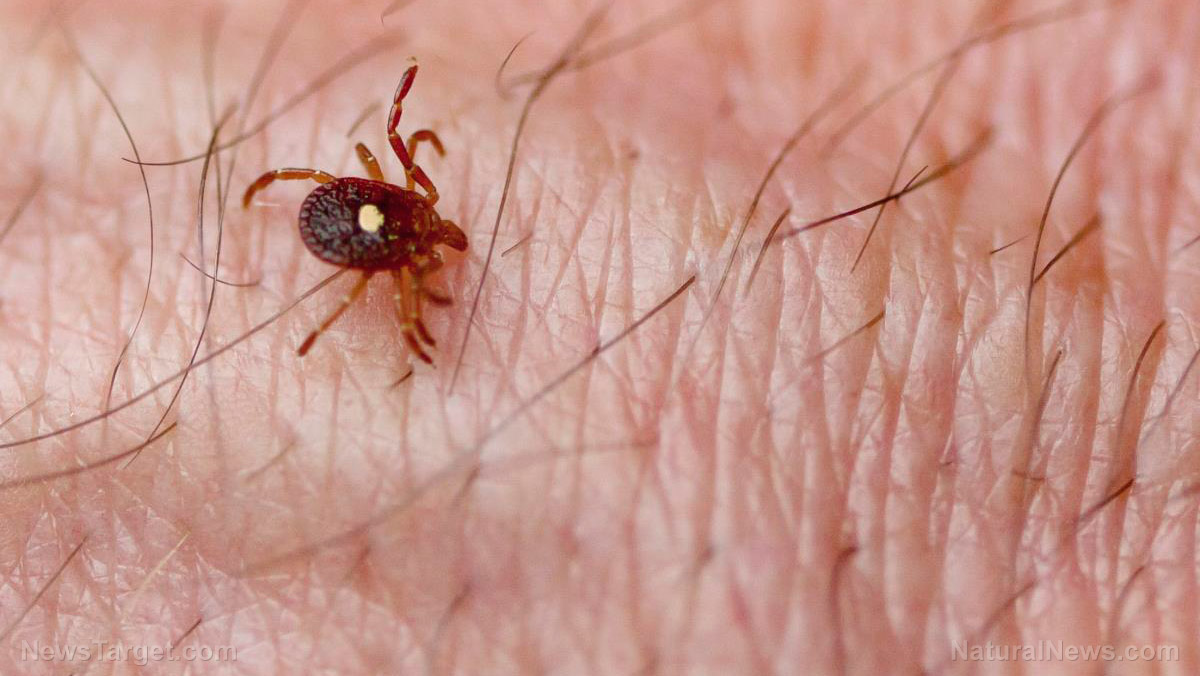Is 2017 the year of the Tick? Scientists predict a surge in Lyme disease cases
05/12/2017 / By Bridgette Wilcox

Scientists have urged those in the Northeastern United States to prepare for a rise in Lyme disease cases this year. The forecast comes at the heels of a population surge among white-footed mice which serve as hosts for Lyme-bearing ticks, USAToday.com reported. Scientists trace the upsurge in ticks to an acorn abundance in 2015, which caused the mice boom, which then caused the tick boom.
The surge in infected ticks is seen to last into the early summer, putting humans at greater risk for the infectious disease. Lyme disease is caused by the borrelia burgdorferi bacteria, which is acquired by ticks mostly from the mice who carry the bacteria. It takes 36 to 48 hours of latching before the bacteria can be transmitted to humans, and early detection greatly reduces the impact of the disease. Conversely, if left untreated, it can lead to severe health problems. Lyme disease detection and diagnosis are notoriously tricky, as the disease’s symptoms are highly similar to other afflictions and testing during the early stages is often unreliable.
According to the Centers for Disease Control and Prevention (CDC), early signs and symptoms of Lyme disease that may occur from three to 30 days after the bite include:
- Fever
- Chills
- Headache
- Fatigue
- Muscle and joint pain
- Swollen lymph nodes
- A rash called Erythema migrans (EM) that resembles a bullseye.
Meanwhile, later signs and symptoms which may appear days to months after the bite include:
- Severe headaches and stiff neck
- Additional EM rashes
- Joint pain and swelling particularly in the knee and other large joints
- Facial palsy
- Heart palpitations
- Dizziness or shortness of breath
- Brain and spinal cord inflammation
- Nerve pain, shooting pains, numbness, or tingling in hands or feet
- Short-term memory problems
- Irregular pain in tendons, muscles, joints, and bones
CDC statistics reveal that around 30,000 cases of Lyme disease are recorded every year, though studies suggest that the number of people diagnosed with Lyme disease may be closer to 300,000.
Preventing Lyme disease
With few treatment options available apart from taking oral antibiotics, prevention may be the best cure. LymeDisease.org listed several ways to defend against the illness.
Avoiding the natural habitat of ticks is key; activities that involve being near dried leaves, grass, bushes, and logs can put one at a high risk for getting bitten. Covering up with long pants, long-sleeved shirts, closed shoes, and socks is another way to avoid getting bitten by ticks. Additionally, wearing light clothes can make it easier to spot ticks before they can get to you. Treating clothes and shoes with permethrin is also known to keep Lyme-infected ticks at bay, as well as putting repellent on exposed skin.
The organization also recommended periodically checking your clothes and skin for ticks, brushing off what you can and removing any ticks that are attached. Taking a shower as soon as you get home is a good way to check for rogue ticks and wash away those that have not been attached. While in the shower, pay attention to places such as the groin, armpits, back of knees, bellybutton, and scalp as ticks may be hiding there. Any unusual bumps may also be an embedded tick.
It is important to kill any ticks that may have entered your home with you, so run your outside clothes through a hot dryer for 10 minutes to kill any that may have latched. Consider that cats and dogs can be tick carriers as well, so talk to your vet about protecting them too.
If you’ve found that a tick has bitten you, remove it immediately with fine-point tweezers or a tick-removing tool. Be sure not to squeeze, twist, squash, or burn it. Take hold of the tick as close to the skin as possible, and pull it out with a steady pressure. Make sure to disinfect the bite and your hands. Save the tick for testing, making note of the date and size of the bite, and how long the tick was attached.
Sources include:
Tagged Under: Lyme disease, lyme disease prevention, lyme disease symptoms




















